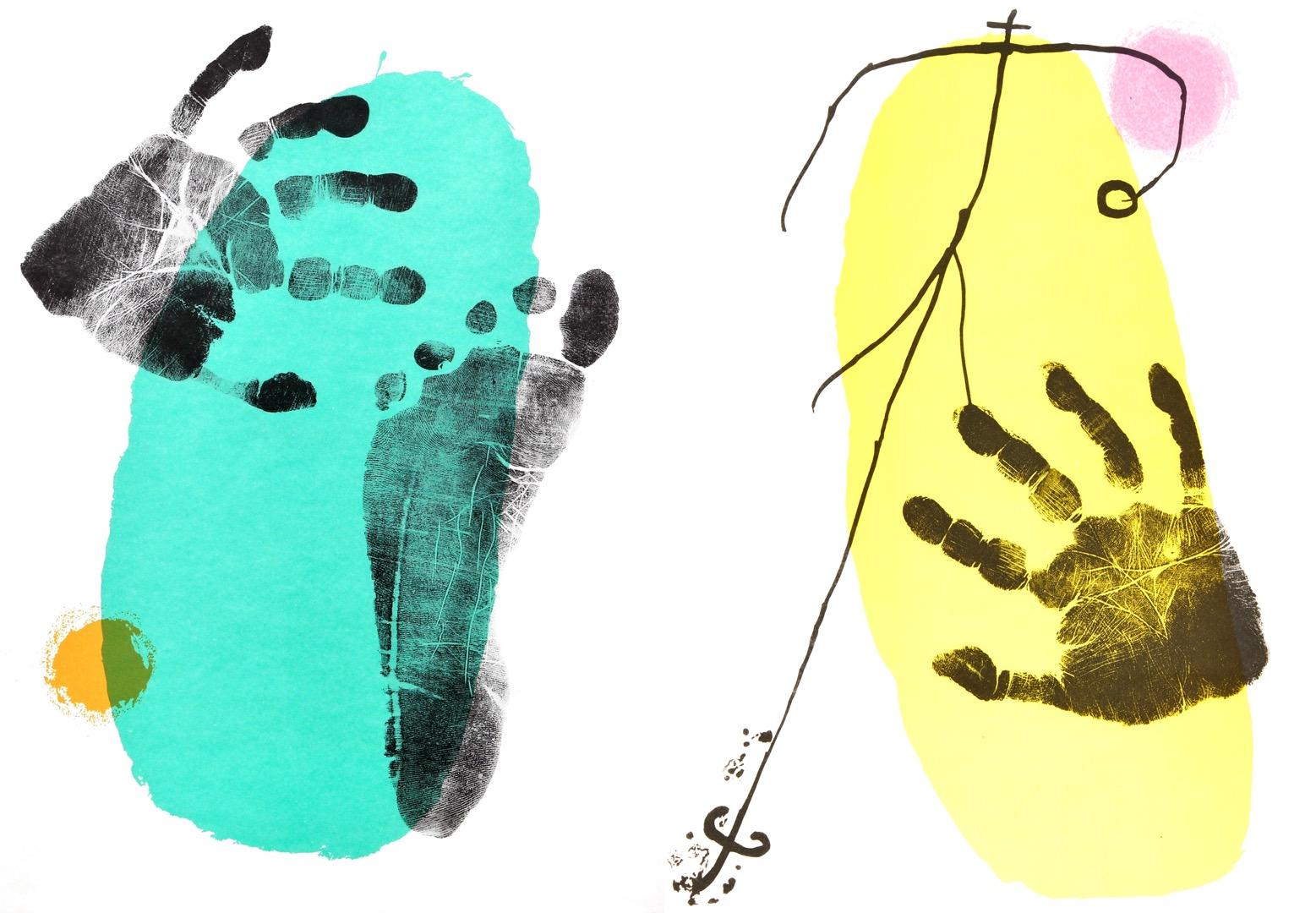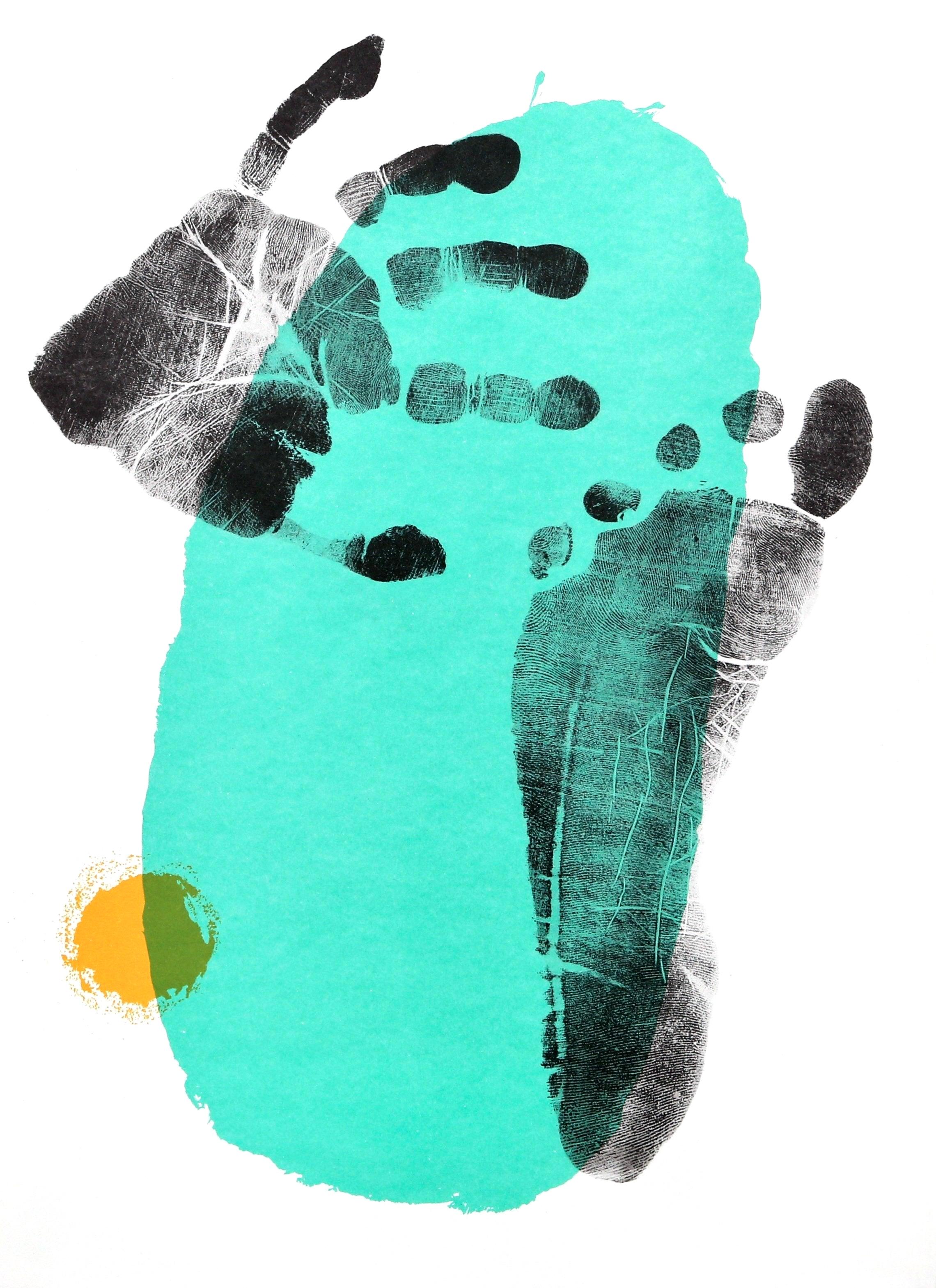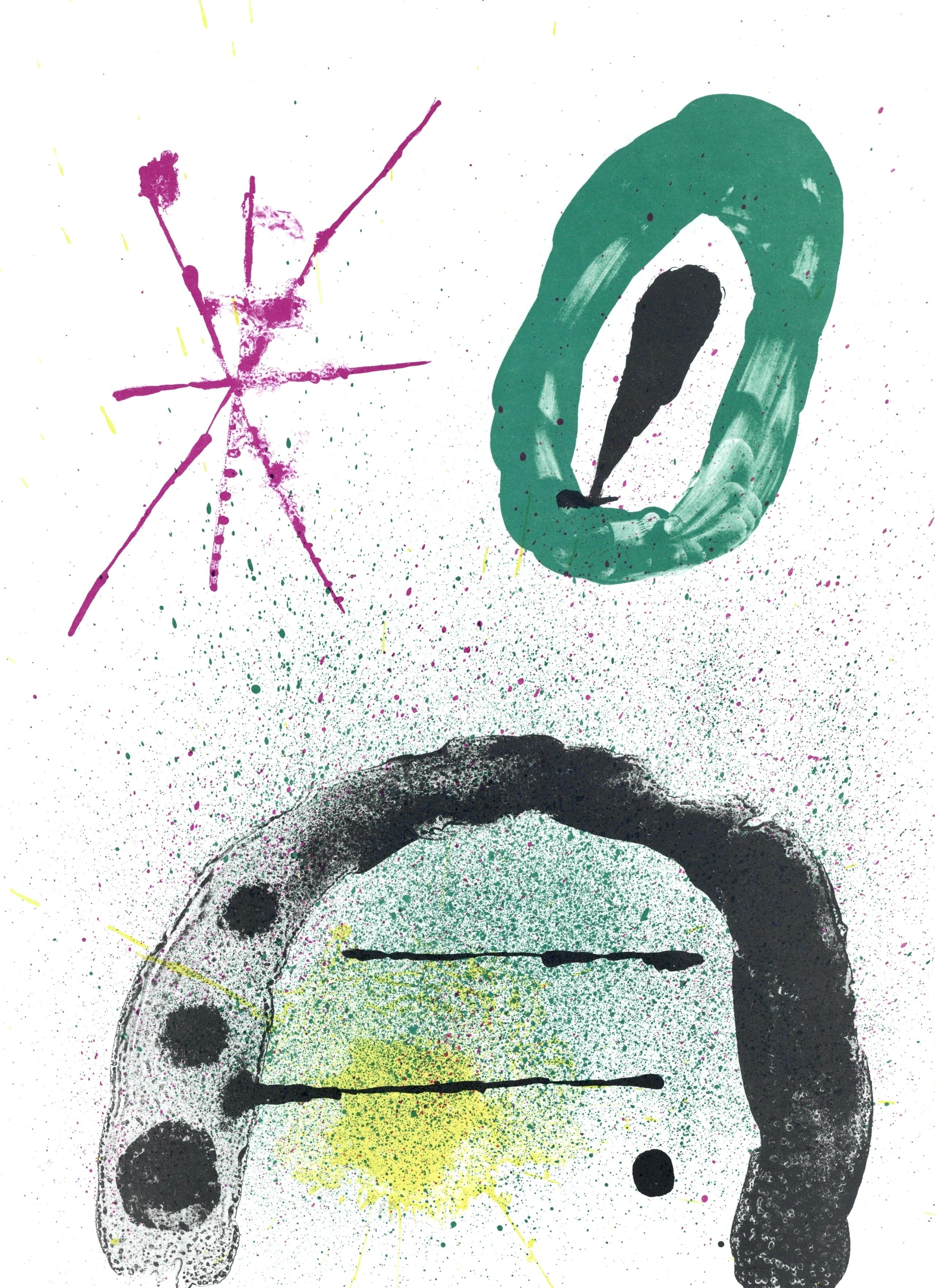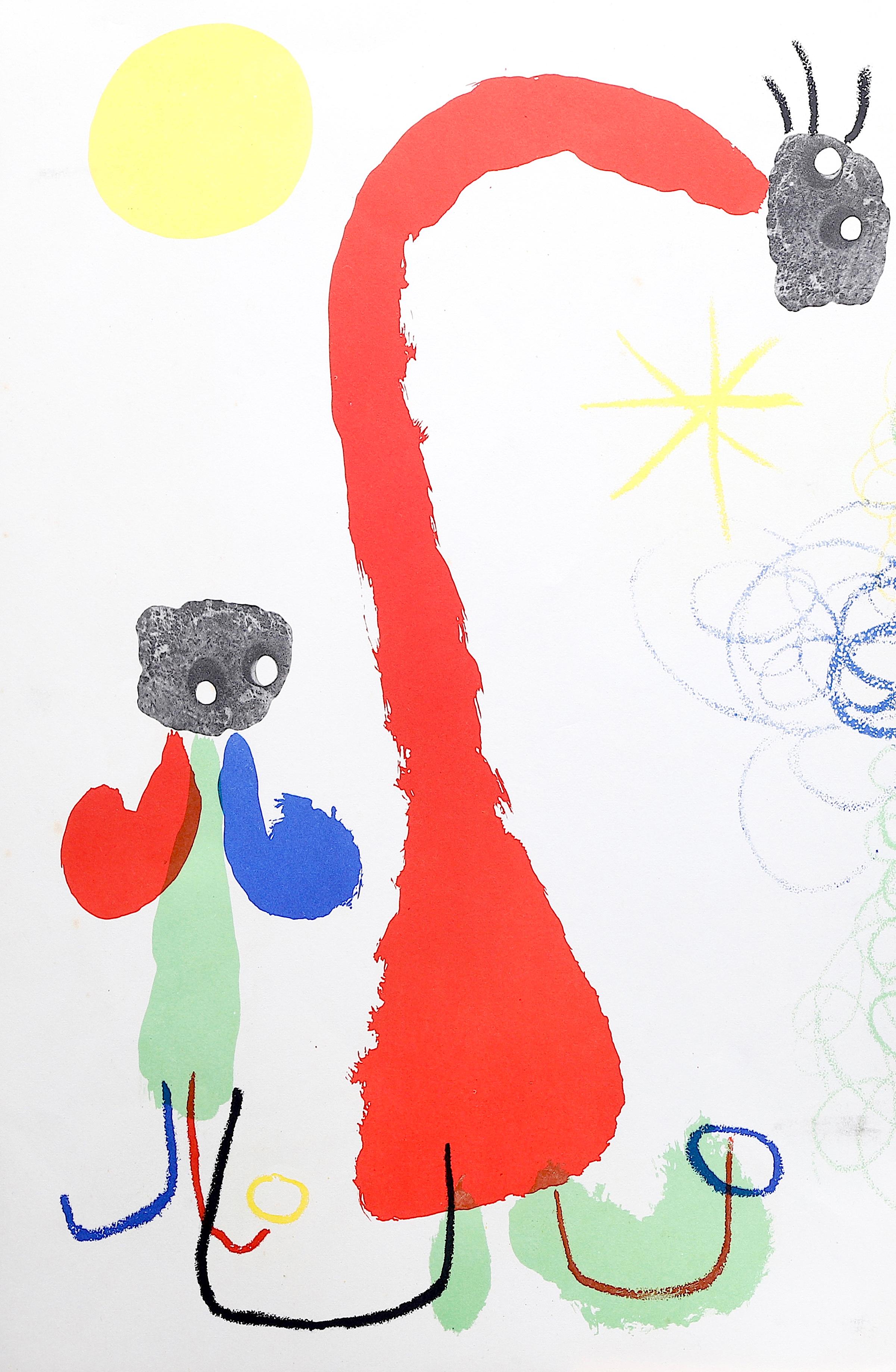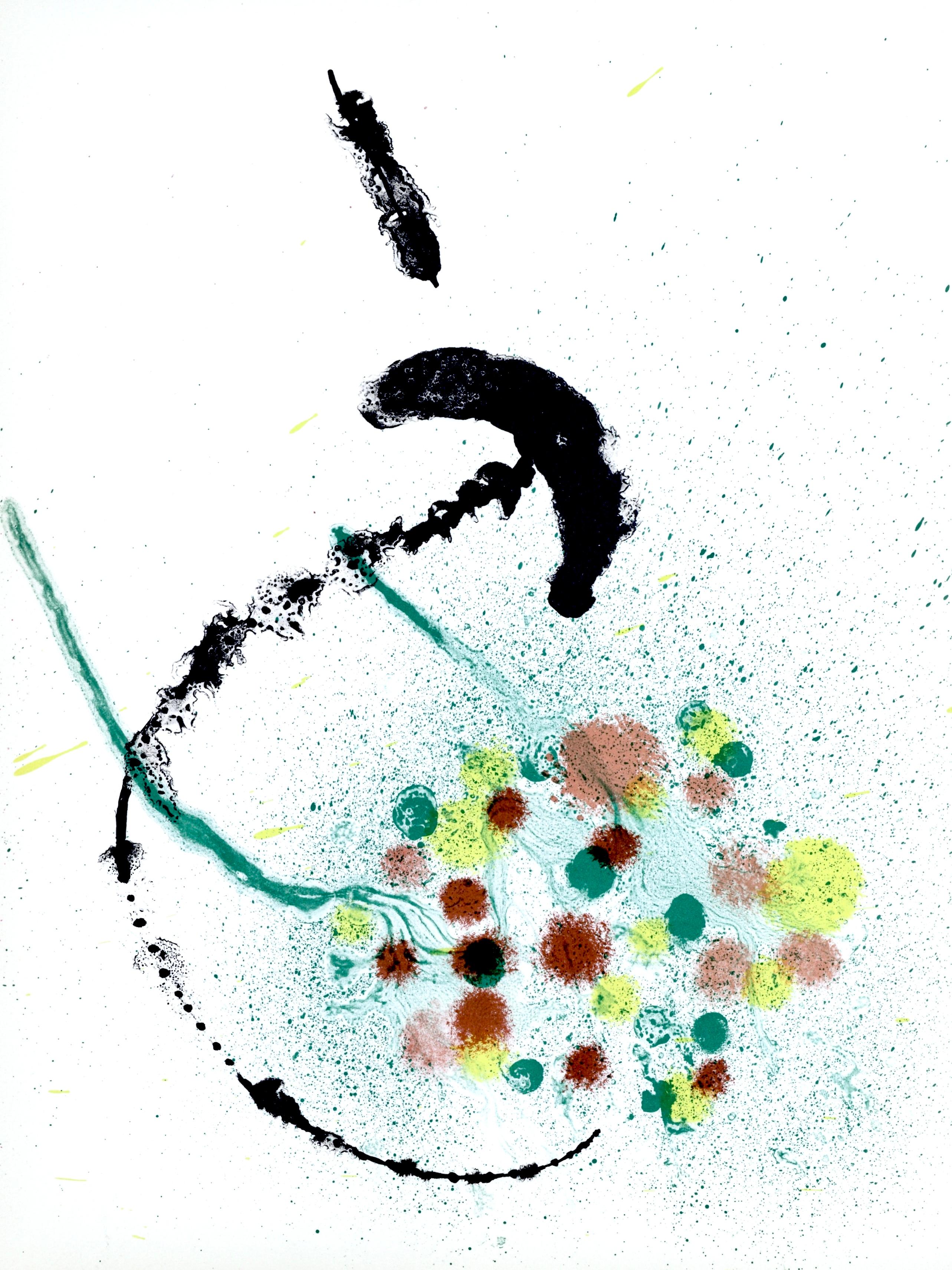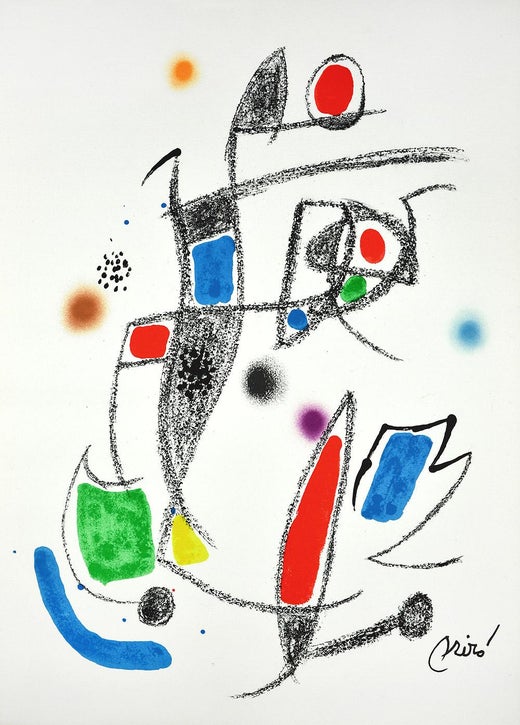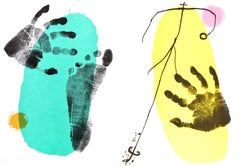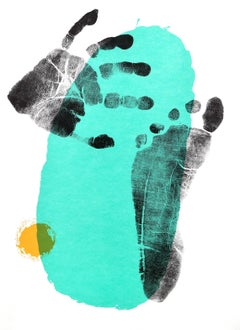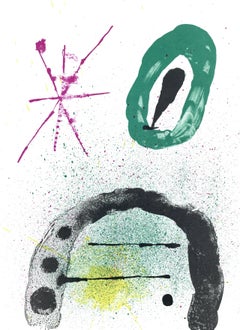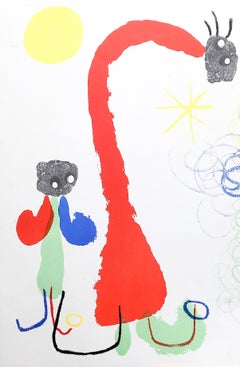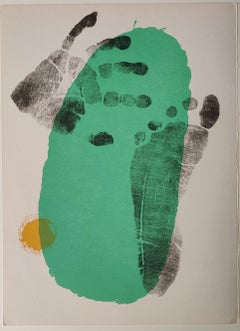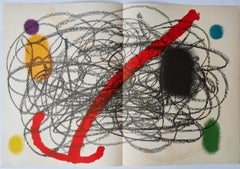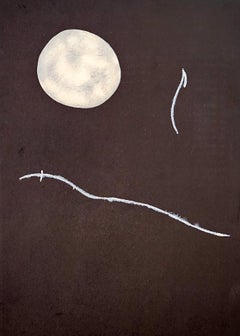This exquisite lithograph by Joan Miro (1893–1983), titled Empreinte de main sur fond jaune (Handprint on Yellow Background), from the folio Derriere le miroir, No. 87–89, originates from the 1956 edition published by Maeght Editeur, Paris, and printed by Mourlot Freres, Paris, 1956. Empreinte de main sur fond jaune exemplifies Miro’s fascination with gesture, spontaneity, and the primal act of mark-making, where the vivid yellow field becomes both a stage for and a symbol of creative energy.
Executed as a lithograph on velin paper, this work measures 15 x 11 inches. Unsigned and unnumbered as issued. The edition exemplifies the superb craftsmanship of Mourlot Freres, Paris.
Artwork Details:
Artist: Joan Miro (1893–1983)
Title: Empreinte de main sur fond jaune (Handprint on Yellow Background), from the folio Derriere le miroir, No. 87–89
Medium: Lithograph on velin paper
Dimensions: 15 x 11 inches (38.1 x 27.94 cm)
Inscription: Unsigned and unnumbered as issued
Date: 1956
Publisher: Maeght Editeur, Paris
Printer: Mourlot Freres, Paris
Catalogue raisonne reference:
Cramer, Patrick, and Isabelle Monod-Fontaine. Joan Miro: Catalogue Raisonne des Livres Illustres. Patrick Cramer Editeur, Geneva, 1989, no. 34.
Condition: Well preserved, consistent with age and medium
Provenance: From the folio Derriere le miroir, No. 87–89, published by Maeght Editeur, Paris; printed by Mourlot Freres, Paris, 1956
Notes:
Excerpted from the folio (translated from French), Miroir Miro and Oasis Miro are extracted from the album by Jacques Prevert and Georges Ribemont-Dessaignes devoted to Miro.
About the Publication:
Derriere le miroir (Behind the Mirror) was one of the most important art publications of the 20th century, created and published by Maeght Editeur in Paris from 1946 to 1982. Founded by the visionary art dealer and publisher Aime Maeght, the series served as both an exhibition catalogue and a work of art in its own right, uniting original lithographs by leading modern and contemporary artists with critical essays, poetry, and design of the highest quality. Printed by master lithographers such as Mourlot Freres and Arte, Derriere le miroir became synonymous with the artistic vanguard of postwar Europe. Each issue was devoted to a single artist or theme and published to accompany exhibitions at the Galerie Maeght in Paris, featuring works by Pablo Picasso, Henri Matisse, Georges Braque, Joan Miro, Marc Chagall, Alexander Calder, Fernand Leger, and Alberto Giacometti, among others. The publication reflected Maeght’s belief that art should be both accessible and elevated—an ideal realized through its luxurious production values, meticulous printing, and collaboration with the greatest creative minds of its time.
About the Artist:
Joan Miro (1893–1983) was a Catalan painter, sculptor, printmaker, and ceramicist whose visionary imagination and lyrical abstraction made him one of the most influential and beloved artists of the 20th century. Born in Barcelona, Miro drew inspiration from Catalan folk art, Romanesque frescoes, and the luminous landscapes of Mont-roig del Camp, developing a deep connection to nature that infused his work with vitality and symbolism. After formal training at the Escola d'Art in Barcelona, he absorbed the lessons of Post-Impressionism and Cubism before moving to Paris in the early 1920s, where he became a leading figure in the Surrealist movement. There, Miro forged a personal visual language of biomorphic shapes, floating symbols, and radiant color harmonies that reflected both spontaneity and spiritual depth. In creative dialogue with peers such as Alexander Calder, Alberto Giacometti, Salvador Dali, Wassily Kandinsky, Marcel Duchamp, and Man Ray, he helped revolutionize modern art by dissolving the boundaries between abstraction and dream imagery. Miro's inventive approach extended far beyond painting, embracing sculpture, ceramics, and monumental public commissions that redefined how art could interact with space and emotion. His expressive freedom and gestural abstraction profoundly influenced later artists including Jackson Pollock, Mark Rothko, Alexander Calder, Jean Dubuffet, Antoni Tapies, and Joan Mitchell, inspiring generations who sought to merge instinct, color, and imagination. Today, Miro's work remains a cornerstone of modernism, prized by collectors and celebrated in major museums worldwide. His highest auction record was achieved by Peinture (Etoile Bleue) (1927), which sold for £23,561,250 (approximately $37 million) at Sotheby's, London, on June 19, 2012.
Joan Miro Empreinte de main sur fond jaune 1956, Miro Handprint on Yellow Background, Miro Derriere le miroir No. 87–89, Miro Mourlot lithograph, Miro Maeght Editeur, Miro velin paper, Miro collectible print.
